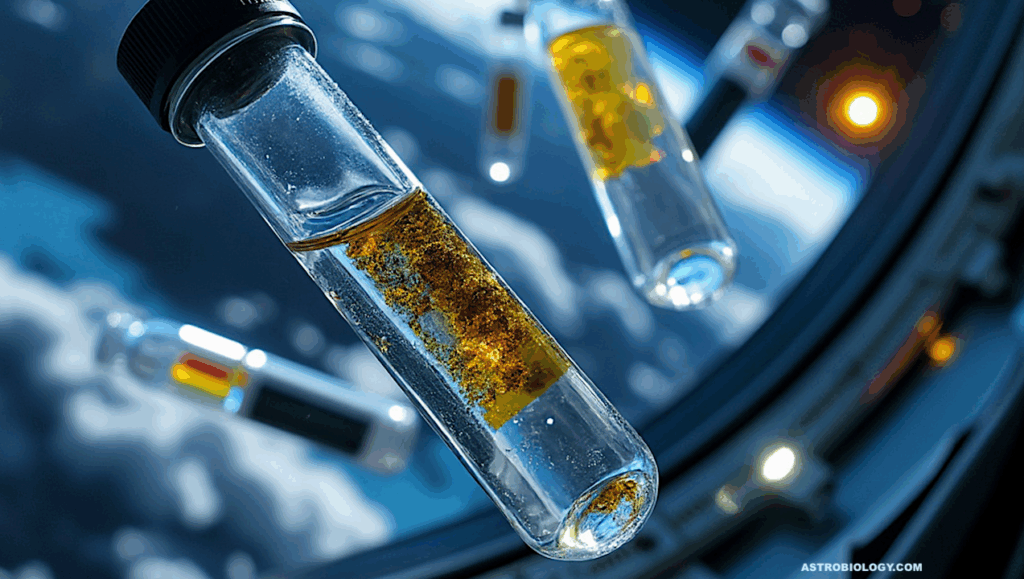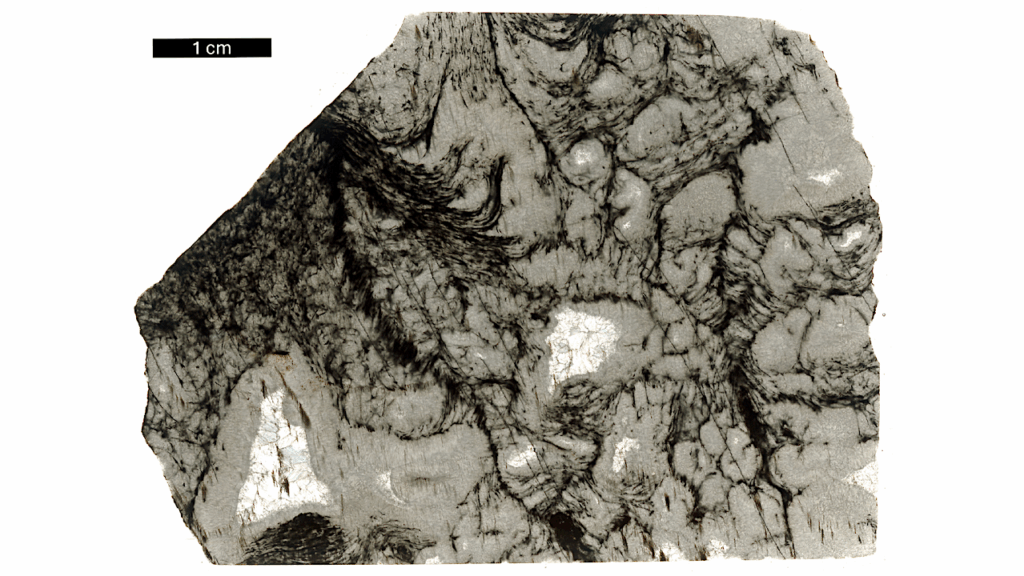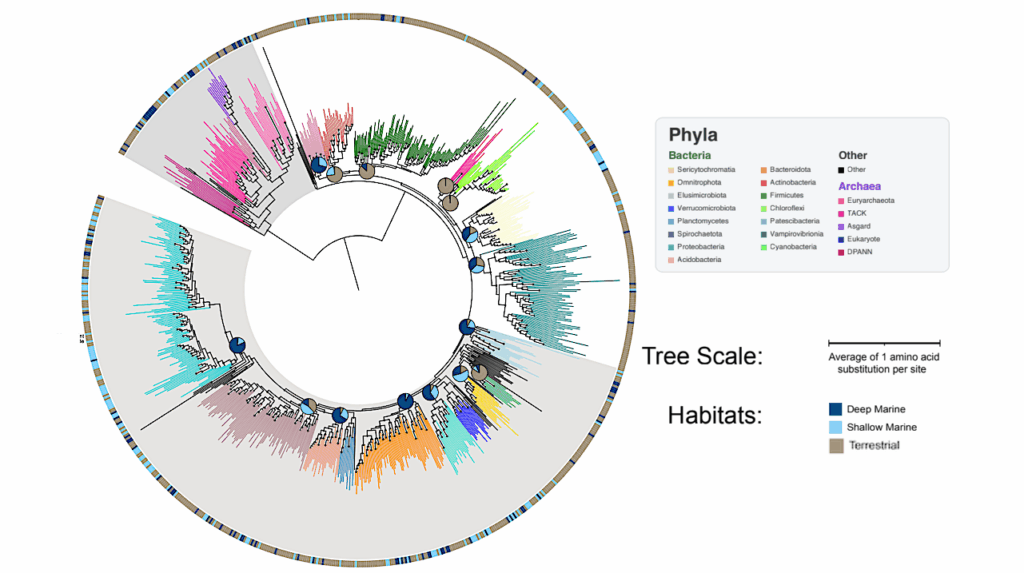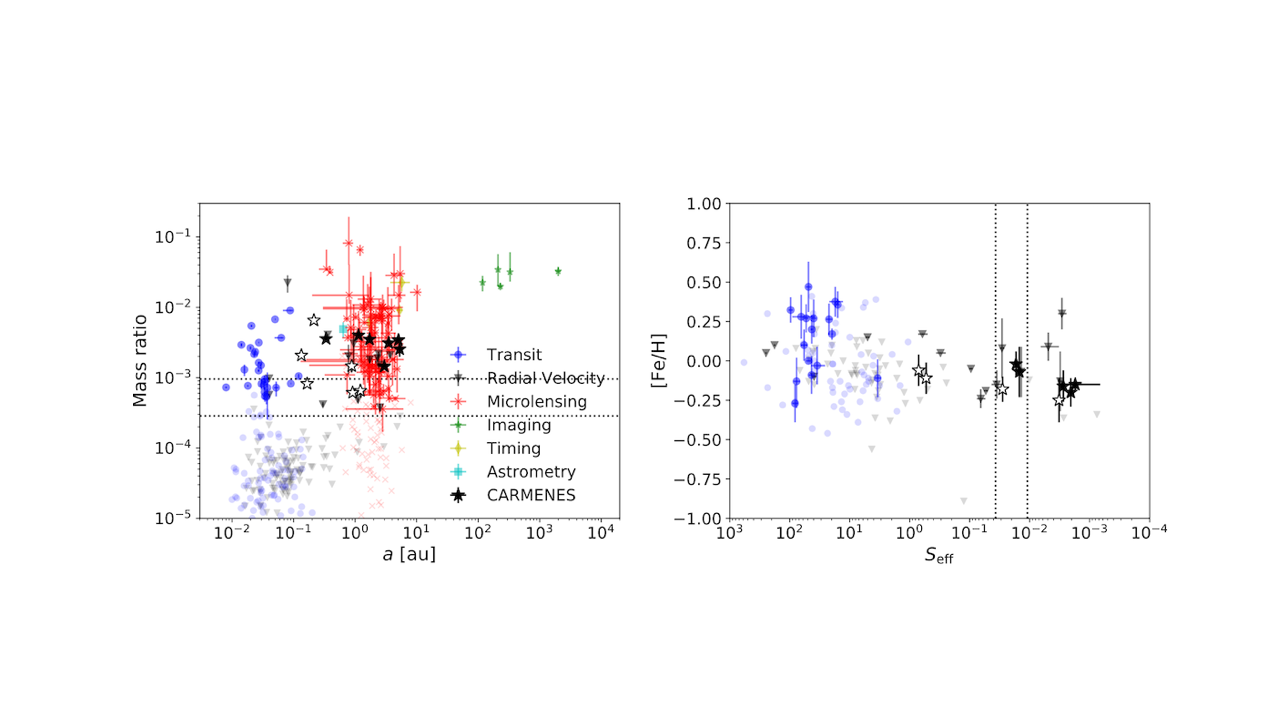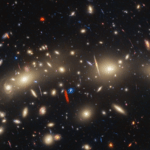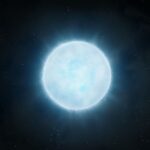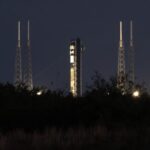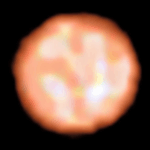Now Reading: Spectroscopic Characterization Of Interstellar Object 3I/ATLAS: Water Ice In The Coma
-
01
Spectroscopic Characterization Of Interstellar Object 3I/ATLAS: Water Ice In The Coma
Spectroscopic Characterization Of Interstellar Object 3I/ATLAS: Water Ice In The Coma
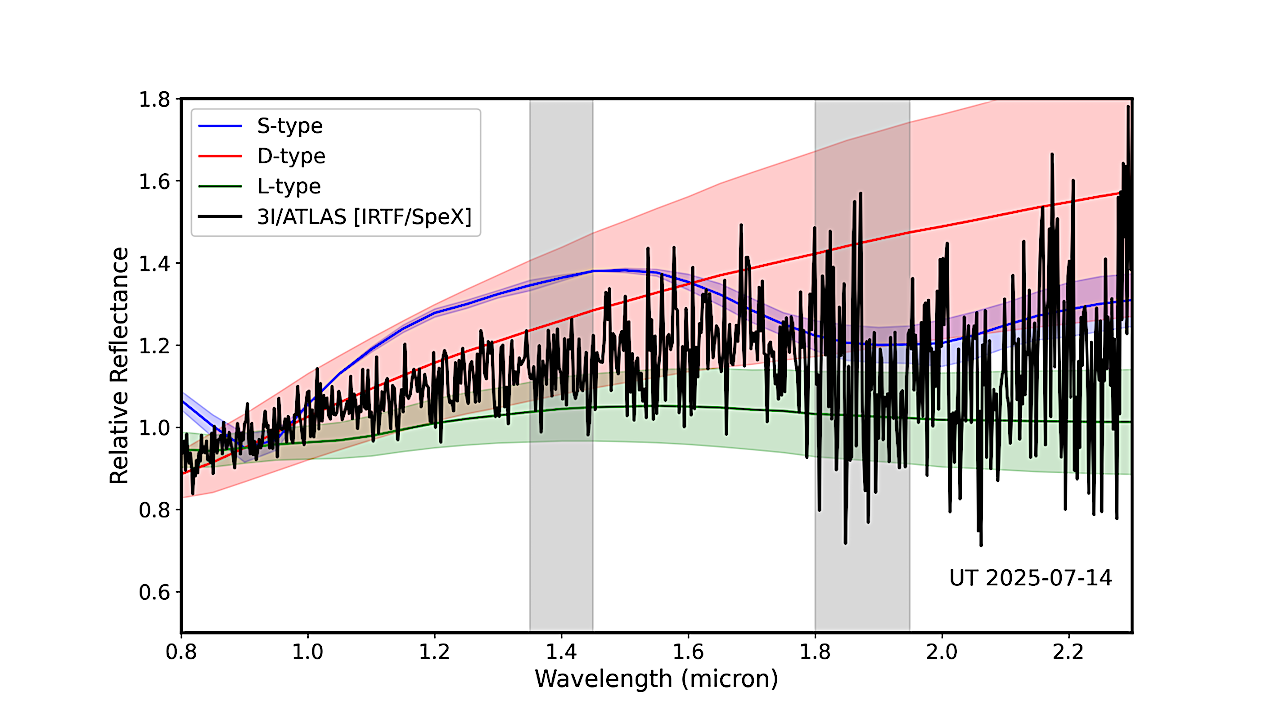
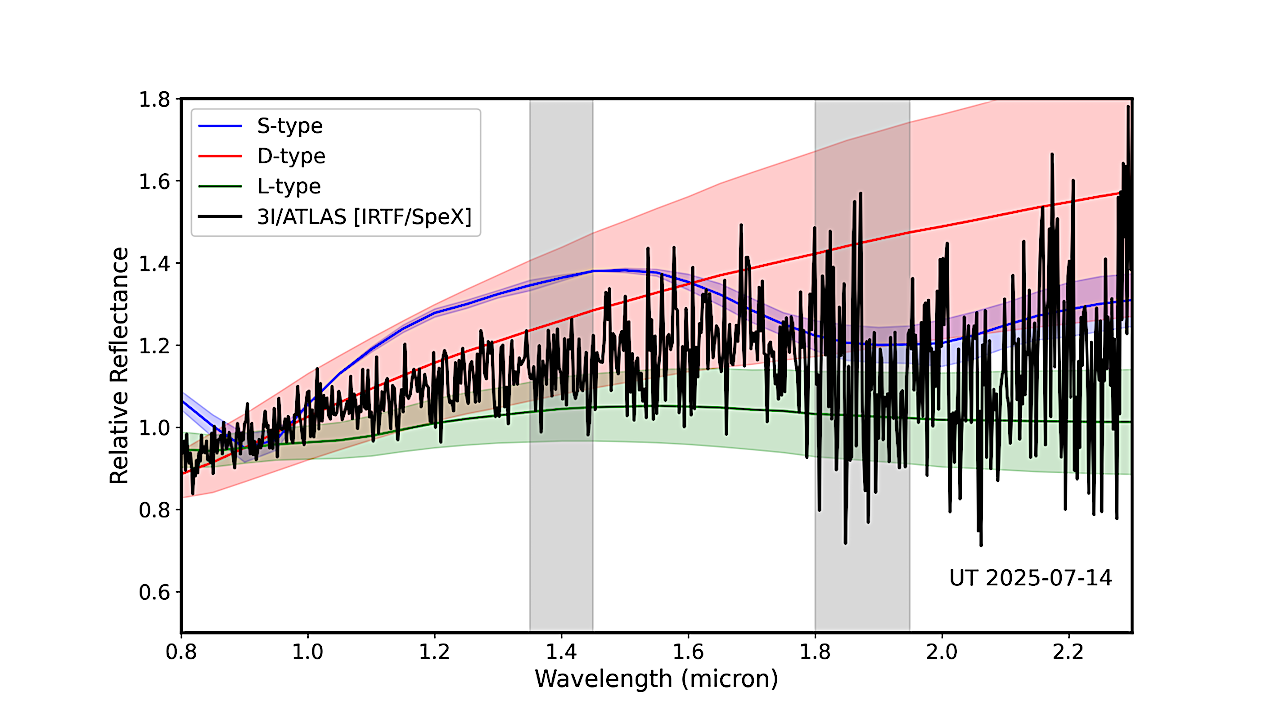
The black line shows the IRTF/SpeX spectrum of 3I/ATLAS, normalized at 1.2 µm. Colored lines and shaded regions represent the mean and ±σ ranges for S-type (blue), D-type (red), and L-type (green) asteroids, as in Figure 1. Gray regions (1.35-1.45 µm and 1.80-1.95 µm) indicate regions of strong telluric absorption from water vapor. — astro-ph.EP
We present optical and near-infrared spectroscopy of the interstellar object 3I/ATLAS, obtained with Gemini-S/GMOS and NASA IRTF/SpeX on 2025 July 5 and July 14. The optical spectrum shows a red slope of approximately 10% per 1000 angstroms between 0.5 and 0.8 microns, closely resembling that of typical D-type asteroids.
At longer wavelengths, the near-infrared spectrum flattens significantly to approximately 3% per 1000 angstroms from 0.9 to 1.5 microns, consistent with the spectral behavior of large water ice grains in the coma. Spectral modeling with an areal mixture of 70% Tagish Lake meteorite and 30% 10-micron-sized water ice successfully reproduces both the overall continuum and the broad absorption feature near 2.0 microns.
The 1.5-micron water ice band, however, is not detected, likely due to the limited signal-to-noise of the IRTF data and dilution by refractory materials. The ~30% ice fraction should be interpreted as an approximate, order-of-magnitude estimate of the coma composition.
The agreement between the GMOS and SpeX spectra, taken nine days apart, suggests short-term stability in the coma’s optical properties. Our observations reveal that 3I/ATLAS is an active interstellar comet containing abundant water ice, with a dust composition more similar to D-type asteroids than to ultrared trans-Neptunian objects.
Bin Yang, Karen J. Meech, Michael Connelley, Jacqueline V. Keane
Comments: 8 pages, 4 figures, submitted to ApJL
Subjects: Earth and Planetary Astrophysics (astro-ph.EP); Astrophysics of Galaxies (astro-ph.GA)
Cite as: arXiv:2507.14916 [astro-ph.EP] (or arXiv:2507.14916v1 [astro-ph.EP] for this version)
https://doi.org/10.48550/arXiv.2507.14916
Focus to learn more
Submission history
From: Bin Yang
[v1] Sun, 20 Jul 2025 11:10:21 UTC (1,951 KB)
https://arxiv.org/abs/2507.14916
Astrobiology,
Stay Informed With the Latest & Most Important News
Previous Post
Next Post
-
 012024 in Review: Highlights from NASA in Silicon Valley
012024 in Review: Highlights from NASA in Silicon Valley -
 02Panasonic Leica Summilux DG 15mm f/1.7 ASPH review
02Panasonic Leica Summilux DG 15mm f/1.7 ASPH review -
 03How New NASA, India Earth Satellite NISAR Will See Earth
03How New NASA, India Earth Satellite NISAR Will See Earth -
 04And Thus Begins A New Year For Life On Earth
04And Thus Begins A New Year For Life On Earth -
 05Astronomy Activation Ambassadors: A New Era
05Astronomy Activation Ambassadors: A New Era -
06SpaceX launch surge helps set new global launch record in 2024
-
 07Space Force plans new ‘Futures Command’ amid pressure to speed up modernization
07Space Force plans new ‘Futures Command’ amid pressure to speed up modernization













